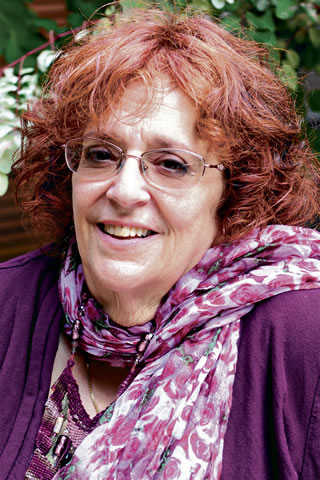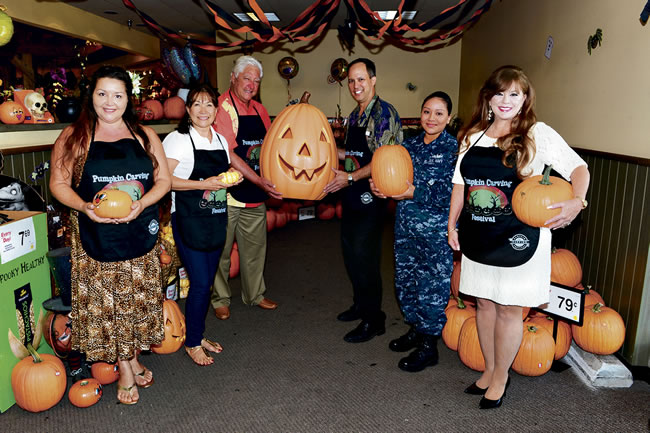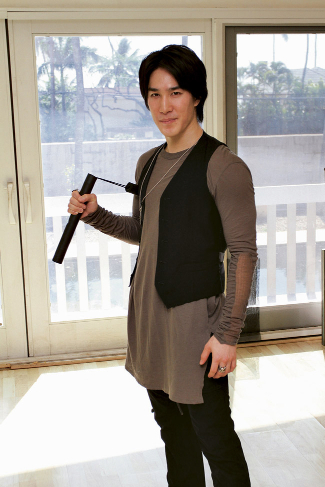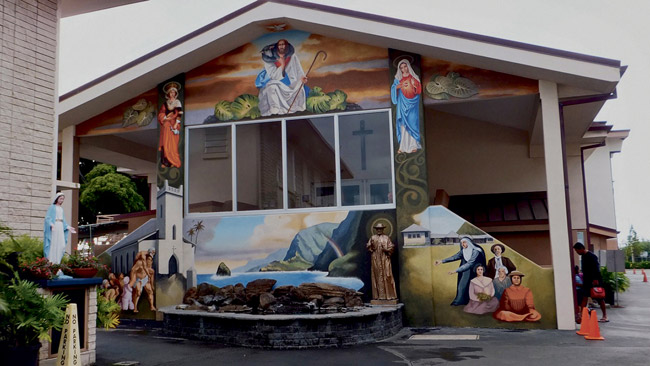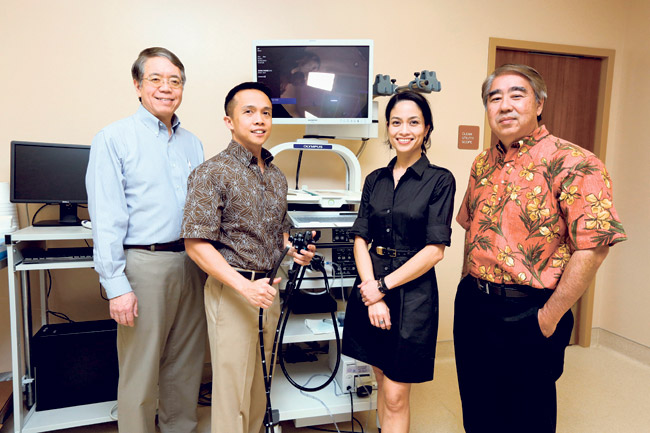When Helene Mann's daughter was born with severe cerebral palsy, she learned to communicate non-verbally with children Take a moment to picture every redhead you have ever seen or met in your life. Got it? The most recent studies by the state departments of Health and Human Services on autism put the current prevalence of children born with the disorder at one in 88 births, a rate higher than children born with auburn locks (which stands at one in 100). That means that in next few years you will know more children with autism than ones you can affectionately call "ginger." The disability has been growing at a double-digit rate since it was first discovered in 1943, when just one in 10,000 children were found to have the condition. The annual cost of autism in the U.S. was estimated at $126 billion by Autism Speaks, the world's leading autism science organization, and locally the DOE spent $30 million alone serving Students with Autism (SWA) during the last school year. The numbers are not rising as dramatically here as they are nationwide, but there was a 7 percent increase in SWA last year, bringing the number of students receiving one-on-one intensive services to 506 of the 1,300 diagnosed with autism spectrum disorders (ASD). One of Hawaii's leaders in aiding SWA is Leeward's Helene Mann, a former standup comedian and belly dancer who discovered her connection with children with disabilities through her own life experiences with her daughter Sehera. Mann's daughter was born with mixed-type, quadriplegic cerebral palsy, leaving her trapped in the body of an 8-month-old her entire 14 years on earth. Her only way of communicating was through her eyes, and it was through Sehera that Mann learned the importance of paying attention to the little things in body language and the love of taking care for a child incapable of caring for herself. "She was my teacher, she was my mentor and my guide," says Mann, who moved to Oahu in 2003, "and because of those incredible 14 years, I developed an incredible sensitivity to non-verbal communication with kids." After her daughter's passing in 1993, Mann began studying at the College of New Jersey, where she received her master's degree in special education. She now had the formal education to go with the practical one that life had given her. She went to work in Camden, N.J., a place with a reputation for tough kids - so tough, in fact, that Mann recalls how disheartened her principal was when he visited the local prison and so many of the inmates knew him by name because they were his former students. It was here that she learned the value of not just patience with SWA, but that one has to take off the authoritarian hat of old- time schoolteachers and look more to serve as a guide to students, letting them lead you to where you want them to be. "You have to abandon the way you were raised, 'you do this because I said so,'" says Mann. "When you are working with autistic kids, you have to let them lead you and give up your control; it is no longer an ego trip. I can give up that control because I know I am in charge ultimately." She believes you have to find each child's own interest. If a kid is into dinosaurs, her examples to them will involve a brontosaurus; when the obsession is Yu-Gi-Oh, math problems involve how many bananas Yu-Gi-Oh got at the store. "I had a kid with ASD and he loved building things with blocks - that was all he wanted to do, he could build anything," says Mann, who was hired to head the proposed Autism Center in 2007, but left after eight months because she missed the interaction with the children. "I taught him the difference in colors and how to count by using those blocks." The key is to watch the children to see what they will react to; sometimes it is not obvious right away. She believes that without motivation no one can truly learn, and with SWA, those motivations cannot be manufactured, but must come from the students themselves. "The teaching has to be child-centered; the child directs everything," says Mann, who readily admits that she is much better with people who are 4 feet tall and under. "You talk to them, not at them; they will teach you their motivations. If the kid wants a bunny rabbit, you give them a bunny rabbit, you don't give them a jelly bean." Once the motivations have been established, she allows her show biz instincts to take over, as she knows a laugh can be a powerful force in not just gaining the children's trust, but in helping knowledge take root in their minds. "If you have fun while you are learning, there are studies that say you retain more because you are actually paying attention," says Mann, who also serves as director of Jewish studies at Temple Emanu-el. While keeping it light and fun is the goal, keeping it as such can prove difficult with children with autism. This, according to Mann, is a teacher problem, not a student problem. "If the kid is acting up, it is not what are they doing wrong, it is what are you doing wrong," says Mann. "Maybe you haven't read the kid properly or are not empathizing properly with them. You need to allay their anxiety." This is where the patience of Sehera comes in, observing and understanding what a child needs when they are unable to express it themselves. Each child is unique and, for Mann, she feels it is her mission to help them when so many other people would just walk away from the situation. "The largest group of oppressed individuals is children, not women, not blacks, not other ethnic groups, but children all over the world," says Mann. "So, for me, it is important for the kids to make the choice from the matrix of my choosing. We don't cater to the disorder, we cater to the child."
When Helene Mann's daughter was born with severe cerebral palsy, she learned to communicate non-verbally with children Take a moment to picture every redhead you have ever seen or met in your life. Got it? The most recent studies by the state departments of Health and Human Services on autism put the current prevalence of children born with the disorder at one in 88 births, a rate higher than children born with auburn locks (which stands at one in 100). That means that in next few years you will know more children with autism than ones you can affectionately call "ginger." The disability has been growing at a double-digit rate since it was first discovered in 1943, when just one in 10,000 children were found to have the condition. The annual cost of autism in the U.S. was estimated at $126 billion by Autism Speaks, the world's leading autism science organization, and locally the DOE spent $30 million alone serving Students with Autism (SWA) during the last school year. The numbers are not rising as dramatically here as they are nationwide, but there was a 7 percent increase in SWA last year, bringing the number of students receiving one-on-one intensive services to 506 of the 1,300 diagnosed with autism spectrum disorders (ASD). One of Hawaii's leaders in aiding SWA is Leeward's Helene Mann, a former standup comedian and belly dancer who discovered her connection with children with disabilities through her own life experiences with her daughter Sehera. Mann's daughter was born with mixed-type, quadriplegic cerebral palsy, leaving her trapped in the body of an 8-month-old her entire 14 years on earth. Her only way of communicating was through her eyes, and it was through Sehera that Mann learned the importance of paying attention to the little things in body language and the love of taking care for a child incapable of caring for herself. "She was my teacher, she was my mentor and my guide," says Mann, who moved to Oahu in 2003, "and because of those incredible 14 years, I developed an incredible sensitivity to non-verbal communication with kids." After her daughter's passing in 1993, Mann began studying at the College of New Jersey, where she received her master's degree in special education. She now had the formal education to go with the practical one that life had given her. She went to work in Camden, N.J., a place with a reputation for tough kids - so tough, in fact, that Mann recalls how disheartened her principal was when he visited the local prison and so many of the inmates knew him by name because they were his former students. It was here that she learned the value of not just patience with SWA, but that one has to take off the authoritarian hat of old- time schoolteachers and look more to serve as a guide to students, letting them lead you to where you want them to be. "You have to abandon the way you were raised, 'you do this because I said so,'" says Mann. "When you are working with autistic kids, you have to let them lead you and give up your control; it is no longer an ego trip. I can give up that control because I know I am in charge ultimately." She believes you have to find each child's own interest. If a kid is into dinosaurs, her examples to them will involve a brontosaurus; when the obsession is Yu-Gi-Oh, math problems involve how many bananas Yu-Gi-Oh got at the store. "I had a kid with ASD and he loved building things with blocks - that was all he wanted to do, he could build anything," says Mann, who was hired to head the proposed Autism Center in 2007, but left after eight months because she missed the interaction with the children. "I taught him the difference in colors and how to count by using those blocks." The key is to watch the children to see what they will react to; sometimes it is not obvious right away. She believes that without motivation no one can truly learn, and with SWA, those motivations cannot be manufactured, but must come from the students themselves. "The teaching has to be child-centered; the child directs everything," says Mann, who readily admits that she is much better with people who are 4 feet tall and under. "You talk to them, not at them; they will teach you their motivations. If the kid wants a bunny rabbit, you give them a bunny rabbit, you don't give them a jelly bean." Once the motivations have been established, she allows her show biz instincts to take over, as she knows a laugh can be a powerful force in not just gaining the children's trust, but in helping knowledge take root in their minds. "If you have fun while you are learning, there are studies that say you retain more because you are actually paying attention," says Mann, who also serves as director of Jewish studies at Temple Emanu-el. While keeping it light and fun is the goal, keeping it as such can prove difficult with children with autism. This, according to Mann, is a teacher problem, not a student problem. "If the kid is acting up, it is not what are they doing wrong, it is what are you doing wrong," says Mann. "Maybe you haven't read the kid properly or are not empathizing properly with them. You need to allay their anxiety." This is where the patience of Sehera comes in, observing and understanding what a child needs when they are unable to express it themselves. Each child is unique and, for Mann, she feels it is her mission to help them when so many other people would just walk away from the situation. "The largest group of oppressed individuals is children, not women, not blacks, not other ethnic groups, but children all over the world," says Mann. "So, for me, it is important for the kids to make the choice from the matrix of my choosing. We don't cater to the disorder, we cater to the child."
